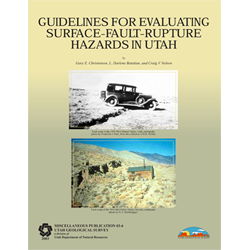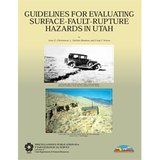Guidelines for evaluating surface-fault-rupture hazards in Utah (MP 03-6)
By: G. E. Christenson, L. D. Batatian, and C. V. Nelson
The purpose of these guidelines is to outline appropriate surface-fault-rupture-hazard investigation techniques and report content to ensure adequate studies to protect the public, aid in land-use regulation, and facilitate risk reduction. Faults are grouped into Holocene, Late Quaternary, or Quaternary activity classes to determine the need for site-specific study and setbacks. The Utah Geological Survey (UGS) recommends site-specific studies for all critical facilities and structures for human occupancy along Holocene faults, and for critical facilities along Late Quaternary faults. For non-critical facilities for human occupancy along Late Quaternary faults, and for all structures along Quaternary faults, studies are either recommended to assess the hazard and risk to aid in decision-making, or are considered optional. For well-defined faults, we recommend a special-study area 500 feet wide on the downthrown side and 250 feet wide on the upthrown side. For buried or approximately located faults, we recommend a special-study area 1000 feet on either side of the mapped fault where at least surficial geologic studies are conducted to identify possible faults for further study.
A site-specific surface-fault-rupture-hazard evaluation typically includes a literature review, aerial photograph analysis, and field investigation, usually including surficial geologic mapping and trenching to determine the age, displacement, and dip of faults. Setbacks are then determined based on these factors, footing depths, and the criticality of the facility. Risk-reduction measures in addition to setbacks include foundation reinforcement and disclosure. Surface fault-rupture-hazard studies must be signed and stamped by the licensed Utah Professional Geologist performing the study.
Other Information:
Published: 2003
Pages: 14 p.
Location: Utah
Media Type: Paper Publication







